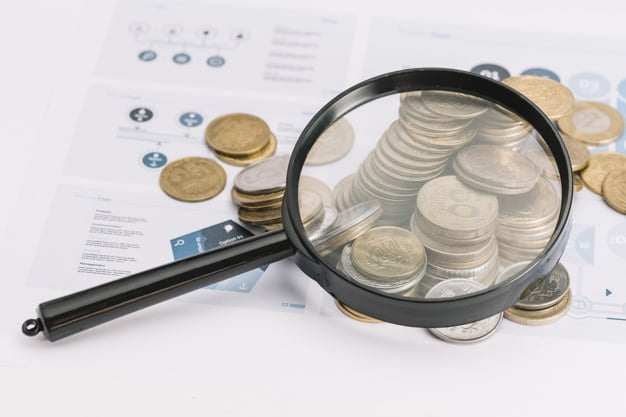The Benefits of Undergoing Money Laundering Risk Assessments
by Abdul Aziz Mondal Finance Published on: 08 February 2021 Last Updated on: 20 August 2024

Conducting a thorough money laundering risk assessment is the first step in the Anti-Money Laundering (AML) compliance journey and is a process that measures the risk and probability that a business may be used for the purposes of laundering dirty money. While it is a principal requirement in adhering to AML laws, it serves as far more than just a box to check on your way to running a legitimate business.
Whether it’s an effective evaluation of your company as a whole or the ability to focus on the riskiest aspects of your business from a money laundering standpoint, there are many upsides that come with a thorough, well-executed assessment. Here are a few of the benefits of AML risk assessments:
What Are The Benefits Of Money Laundering Risk Assessments?
Money Laundering assessments are becoming more and more important for corporations to function.
This is primarily because this assessment comes with several benefits like keeping up with the regulations, etc.
Here are some of the most prominent benefits of Money Laundering Risk Assessments:
1. It Will Help You Understand Your Business Better

Conducting a proper AML risk assessment not only helps you figure out the kind of products and services you provide but also gives you insight into how similar businesses were run in the past. In addition to that, you’ll be able to put the geographic locations you serve into perspective. Finally, it’ll help you understand your customers better since assessments take into consideration both the type of customer you cater to and the variety of goods and services you offer them.
Undergoing an AML risk assessment gives you a more objective outlook towards your business and provides you with a deeper understanding of your company as a whole, which are two things that will prove to be invaluable to any business owner.
2. AML Risk Assessments Are the Cornerstone Of a Successful Compliance Journey
There’s a reason why money laundering risk assessments serve as the starting point in the AML compliance journey and that’s to point out the aspects of your business that house the greatest risk in attracting money launderers.
AML truly focuses on the problem at hand. Therefore, creating a financial roadmap is one of the foremost tools to help you remain regulated.
This is usually done by an AML officer, whose primary job is to look at your financial habits and create a roadmap that can actually help you run your business and remain in regulation.
Even though money laundering and risk management are essential factors to deal with, these should only serve as roadmaps. In other words, it can help you run a business successfully and without any hassle.
However, you need to remember that money laundering risk management is an ongoing process. Therefore, you have to keep conducting this assessment to keep your business’s financial health in check.
3. Independent Reviews Are Based on AML Risk Assessments
As per the Anti-Money Laundering and Counter Financing of Terrorism act of 2009, all businesses must undergo an audit conducted by an independent party. AML Reviews mostly happen once a year. However, in some cases, the review frequency can increase due to the risk or the officer’s discretion.
Independent reviews are usually based on a company’s AML findings. These assessments are used to gauge several aspects, such as the risk of money laundering and signs of the same. Therefore, independent assessment can help keep a business in regulation.
Essential Checklist To Follow While Conducting AML

Conducting an AML is not the most straightforward task to do. Especially if a person needs to learn about the whole deal. Therefore, we have made a point to include a bonus section discussing an essential checklist that one needs to follow while conducting AML.
This list is meant to be educative and not a cheat sheet. Therefore, you need to pick up your traits from different places to create your money laundering risk assessment checklist.
With that note, let us dive right in.
Shift To Perpetual & Granular
The foremost thing you must do is gradually move from perpetual studies to more granular ones. In other words, you need to shift from a macro-level to a more micro-level. This would enable you to interact with financial concepts more intimately.
A more curated KYC or Know Your Customer can enable you to understand and read finances with more clarity and context. Therefore, always start with the basics and then build up to more complex concepts.
Use Advanced Technologies

The next piece of advice that we would like to give is to have a clear understanding of the advanced technologies available. The current financial landscape is riddled with tools that can make the whole process more streamlined.
We suggest that you use these tools to make your life easier.
However, since the money laundering risk assessment is a complex process that requires a precise understanding of complex concepts, you should be careful when choosing the right tools.
Be Precise
Risk management is only successful if you are precise in your execution. Therefore, you have to delve deeper into the subject and assess everything these concepts can throw at you.
As an assessor, you need to assess points like location, business operation, revenue, form of revenue collected, etc. All of these concepts play a significant role in creating a detailed and precise money laundering risk assessment.
Understand & Customize Mitigating Control

The financial world is riddled with different forms of risks. Not all of these risks are worth the concern.
Therefore, you can quickly mitigate and differentiate between threats if you set alerts regarding certain specific risks on your Money Laundering Risk Assessment or AML software.
This would help you identify the real threat and take care of it. This would not only help you make the right call but will also help you sleep better at night.
The Final Thought
In summation, Money Laundering Risk assessment is a crucial process that every business needs to understand and practice.
Otherwise, they might steer away from the regulated pathways unknowingly, which can end up having disastrous results. Keep following our page for more such content.
Read Also:







































































































